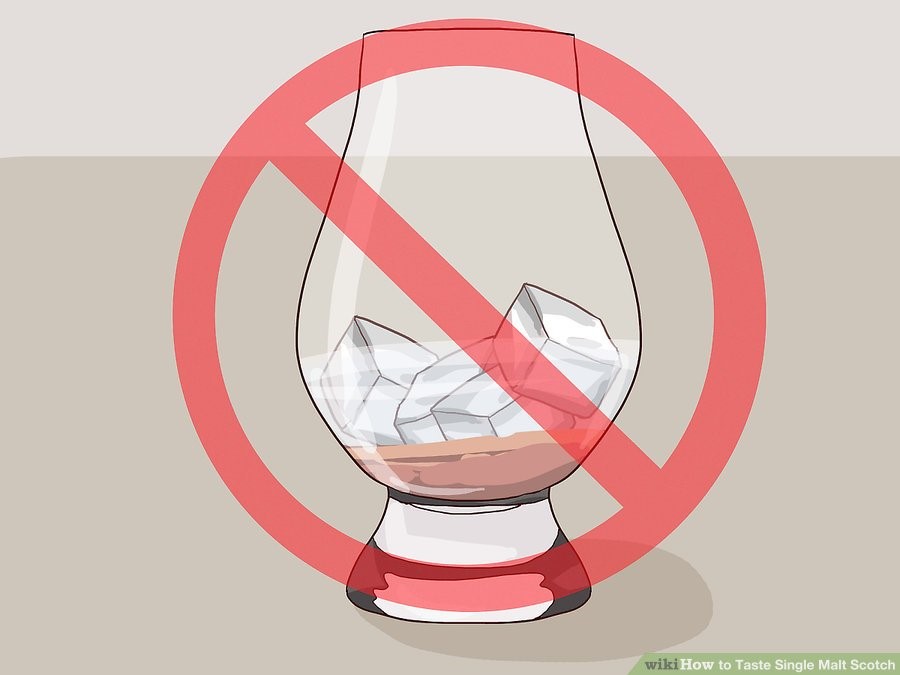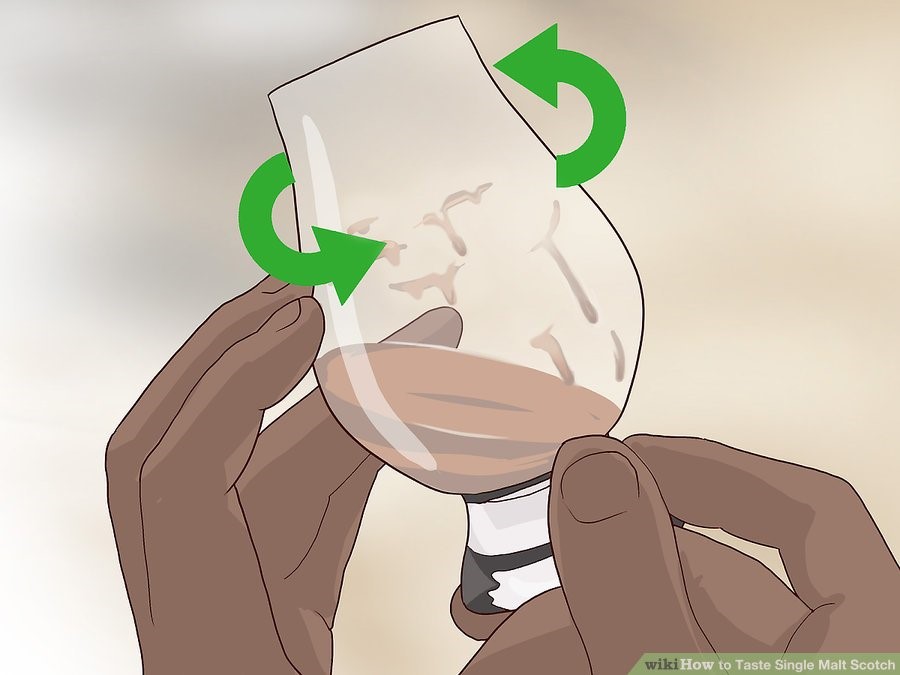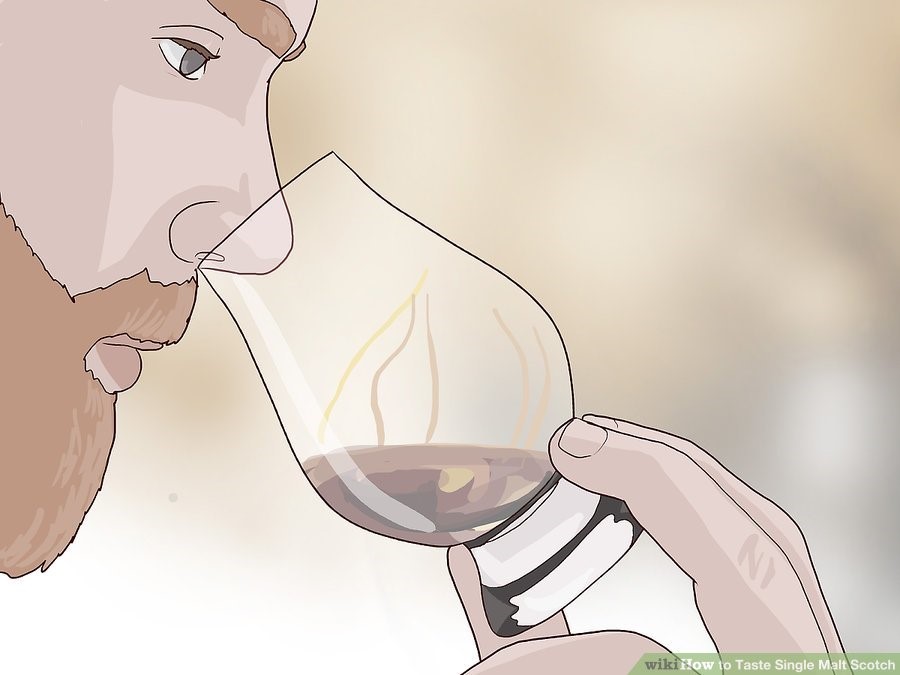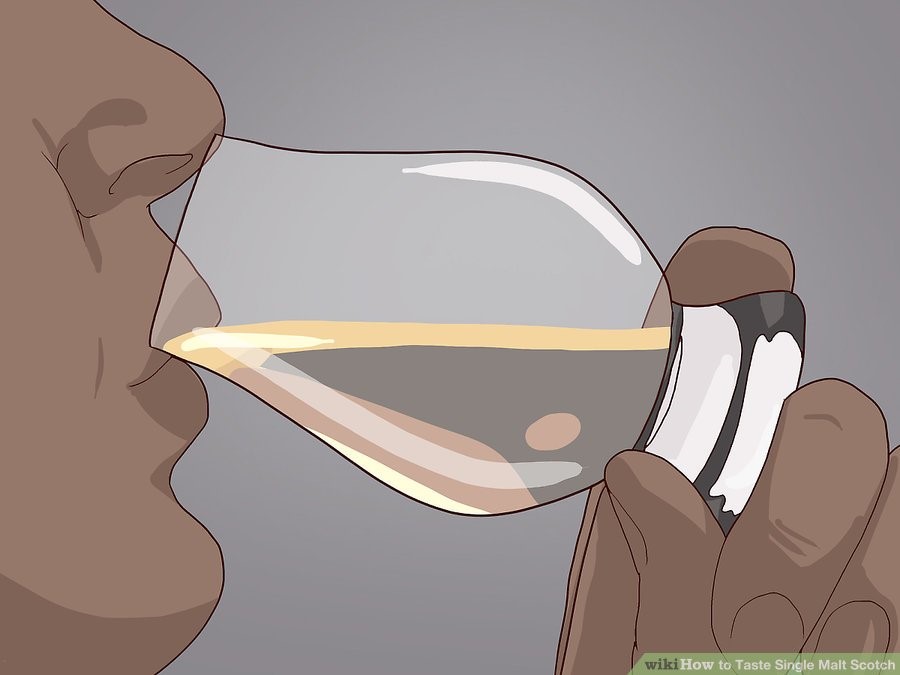Single malt scotch is a Scottish spirit created from malted barley. It’s called “single” malt scotch because it’s made in one distillery, unlike “blended” scotch, which is made up of scotch from multiple distilleries. If you want to taste single malt scotch the right way and appreciate its flavors and aromas, you’ll want to know how to properly pour a dram and how to break down the color, smell, and taste of the scotch. By choosing a good starter scotch and practicing your tasting skills, you can start enjoying everything single malt scotch has to offer.
Part 1: Choosing a Scotch

Get a reasonably priced scotch to start.
A more expensive scotch doesn’t always mean a better tasting experience, especially if you’re a beginner. There are a variety of single malt scotches available for 50 dollars or less that have complex flavors and aromas that you can start out with.
Choose a scotch based on the flavors you like.
Some scotches have a smoky flavor, while others are more fruity and nutty. You won’t know all the flavors a scotch has before you taste it, but you can get a better sense of what they’ll be by knowing what region of Scotland it was distilled in. Look at each of the scotch-producing regions.

Islay: Scotch distilled in the Islay region is smokier with a heavy peat flavor.
The Lowlands: The Lowlands region produces lighter, fresher scotches.
Speyside: Scotch produced in Speyside tends to have fruity flavors.
The Highlands: The Highlands region distills scotches with all different flavors.
Campbeltown: Campbeltown makes distinct and enduring Scotch from 3 distilleries in the region.

Start off with a younger bottle of scotch.
Look for something that’s in the 8 to 15-year range. It’s said that scotch gets better with age, but as a beginner, don’t worry as much about tasting older scotches. Older scotches are traditionally more expensive and you might have a hard time distinguishing the complex flavors and aromas as a beginner.
Part 2: Pouring Your Scotch
Find a glass with a tapered mouth.
Tulip-shaped glasses are a favorite among scotch drinkers. The tulip shape concentrates the scotch’s aromas at your nose, making them easier to detect. If you want a more classic look to your scotch glass, use a tumbler glass. Strongly recommend a Glencairn glass.


Pour yourself a dram.
Hold the neck of the bottle about 1 inch (2.5 cm) above your glass, taking care not to spill any scotch. Pour about 1.5 fluid ounces (44 mL), or 1 shot-glass full, of scotch into your glass.
Add water to the scotch
Water doesn’t dilute scotch; it actually opens up the flavor and releases more of the scotch’s aromas. Use a splash of water to take the edge off your dram especially if it’s over 40% alcohol (80-proof).


Note: adding ice dilutes the flavor
Ice dulls the flavors in scotch and conceals some of the pleasant aromas. It can also numb your taste buds, which isn’t ideal if you’re trying to learn about scotch. However, you can add ice if you want. Or, keep your dram cold using frozen whiskey stones instead.
Part 3: Tasting Your Scotch
Observe the color and clarity of the scotch.
The color and clarity of a scotch can reveal its age. Scotch is aged in wooden barrels, and it absorbs color from the wood during the aging process. That’s how scotch gets its brown and amber coloring. A deeper, darker scotch likely spent more time in the barrel, meaning it’s more aged.


Swirl your drink around gently.
Coat the sides of your glass. Notice the scotch’s consistency and observe the “legs” running down the side of your glass.
- Thin, runny “legs” indicate a lighter scotch, while thick, slow-moving “legs” indicate a heavier scotch in terms of alcohol content.
Smell the aromas in the scotch.
Scotch drinkers call this “nosing” a scotch. Bring the rim of the glass about 1 inch (2.5 cm) from your nose and inhale slowly to take in the subtle aromas of your drink. Pull yourself back if you experience a burning sensation or the smell becomes too much.
- This is an important step! Make a mental note of the different aromas you’re able to perceive so you have something to reference in the future.


Take a sip of the scotch.
Let the scotch coat your mouth, and try to pick out any specific flavors you’re tasting. Try to categorize the scotch you’re tasting as:
- Light: Light scotches tend to have nutty, fruity flavors. They taste light and fresh.
- Delicate: If the scotch has light flavors of nuts and flowers, or a sweet grain taste to it, it might be a delicate scotch.
- Rich: Rich scotches usually have bold, pronounced flavors like chocolate and spiced fruit.
- Smoky: Smoky scotches have a peaty, smoky flavor to them.
Pay attention to the mouthfeel of the scotch.
Different scotches have different mouthfeels, or textures. Roll the scotch around in your mouth and notice how it feels. Is it light and thin or thick and viscous? Creamy or watery? The mouthfeel can give you a sense of how your scotch was made.
- For example, if a scotch has a thin, flat mouthfeel, it might mean it was made with a higher proportion of water than other scotches with thicker textures.


Swallow the scotch in your mouth and note the finish.
The “finish” of a scotch is the taste and feeling it leaves behind in your mouth. Some scotches might have a harsh finish that burns, while others might have finishes that are more subtle and refreshing. Make note of the aftertaste so you can compare it to the “finish” of other scotches in the future.
When tasting multiple scotches, should I cleanse my pallet between tastings?
It is up to you. I don’t, I just pace myself. It’s really not necessary if you take things slow. But if you do best to cleanse the pallet with room temperature distilled or bottled water.
Can scotch be mixed with soda?
Yes, scotch and soda is a common drink that many people enjoy. Just like with water, adding soda to your scotch will open up its flavor.
What is the purpose of whiskey stones?
Whiskey stones are used instead of ice because they can chill the liquid without watering the drink down.
